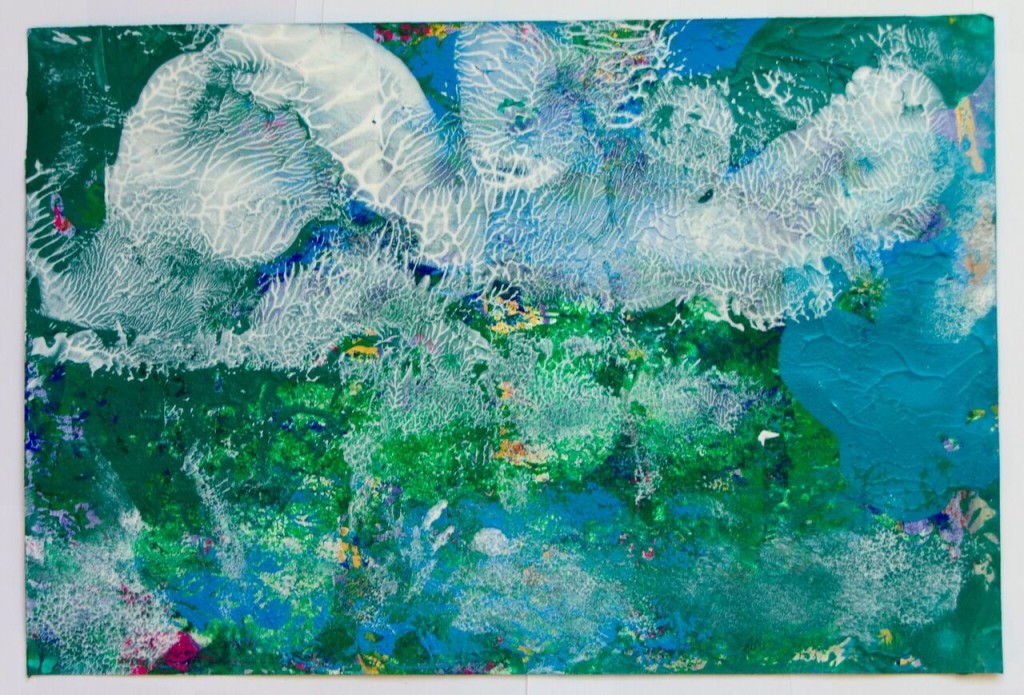SHYLOCK SLIPS OUT OF HIS SKIN
Preliminary dramaturgical notes by Walter Valeri for staging The Merchant in Venice. Translation by Pina Piccolo.
We know that it is practically impossible to have an innocent and unbiased reading of Shakespeare’s The Merchant of Venice today- actually that’s what makes this work so versatile for contemporary adaptations. More than identifying possible cuts or scenes to be added, the challenge lies in conveying the intentions of the lines uttered by every single character, thus, the words spoken by the actor, the ideas he/she expresses and what happens to the listening audiences. That is to say: we must consider the play as a whole, in its succession of words, music, lights and movement that the Compagnia de Colombari has created for the audiences of the Ghetto of Venice. Returning the Merchant to its relevance means making it immediately credible in the digital age- an era of genre crossovers and the daily mortification of expressive speech. Today’s visual civilization entails the globalization of millions of images produced hourly on the streets, multiplied by a non stop digital bombardment. Thus, today the effervescence of Shakespeare’s writing and the specificity of his sound must be enabled to survive in such hostile surroundings. Securing its survival requires a great deal of patience, an overall dramatic pace that is both careful and meticulous, made of text and sub-text, quotes and linguistic micro-betrayals. There is little choice. We must find an acceptable mediation with today’s universe of “seeing” as opposed to that of “listening”, which prevailed in Shakespeare’s times.
Today more than ever before, staging The merchant of Venice means starting from an incredibly well-written text meant for an audience of listeners and transposing it for today’s audiences of spectators. This masterpiece was registered at London’s Stationer’s Register in July 1598 to prevent pirated copies from being published. Many other uncertainties, hopes and good intentions must be added to this initial obstacle and have dogged us as we tried to explain to ourselves and to others ‘how’ and ‘why’ this play, associated with the character of Shylock and its mythology right from the start, is still capable to fully catch our attention. That’s why from the very beginning we insisted that it be radically altered. We felt an almost ‘natural’ duty to commit dramaturgical heresy, to transfer Shylock into the body of five actors, make him slip out of his single, unique skin to underscore how each one of us is indeed Shylock. This emblematically unhappy character, who was expropriated of his dignity, persecuted and excluded cuts across all genders and religious creeds. He’s terribly complex and fascinating, both a blessing and a curse for any spectator or dramaturge. He’s unbearable in his opening lines, when turning directly to the audience he states: “I hate him because he’s a Christian, but even more so because in his stupid simple-mindedness he lends money for free and for us, in Venice, that means that the interest rate goes down.” But then his words are heart wrenching when he reminds his callous persecutors, “Has a Jew no eyes? Has he no hands, organs, members, senses, affections and passions?” Even today, beyond his painful, personal story, Shylock asks us and himself to be considered a victim. He’s no longer the assemblying and theatrical transposition of the offensive, antisemitic iconography that originated in the Christian world with the 1320 Narratio legendaria, but rather the universal, painful precipitate of existence in a society dominated only by commerce, money and its power. More than an episode of cruelty on the stage, it is an act of intolerance and fraudulence at its nth power against oneself and others. And in so doing, the play hits our times right at its heart, with great precision.
Walter Valeri
Venice 23 June, 2016, English translation by Pina Piccolo.
In this link find interviews images from the June 2016 staging of the Merchant in Venice, by the Colombari company directed by Karin Conrood in the New Ghetto of Venice
http://www.colombari.org/merchant-of-venice
A New York Times review of the September staging of the play in New York can be found here https://www.nytimes.com/2017/09/25/theater/review-a-flock-of-shylocks-transforms-merchant-of-venice.html
The two photo galleries below refer to the June 20016 Venice staging and September 2017 New York City staging

Walter Valeri is a published poet, playwright, and scholar. His collection of poetry Canzone dell’amante infelice was awarded Italy’s national literary prize, the Mondello. Most recent poetry collections Ora settima (Societa’ Editrice “Il Ponte Vecchio”, 2013) My Name/Il mio nome (qudu, 2015) Parodie del buio (Societa’ Editrice “Il Ponte Vecchio”, 2017). Valeri has also translated several dramatic, fiction, screen, and poetry texts into Italian, including Which Side Are You On? by Ken Loach, Carlino by Stuart Hood, Les Aveugles by Maurice Maeterlinck, The Memory of War by James Fenton, Knepp and Krinsky by Jorge Goldenberg, Adramelech by Valère Novarina, Nobody Dies on Friday by Robert Brustein, Eight Poems by Sam Cornish, The Dear Remote Nearness of You by Danielle Legros Georges (in collaboration with Pina Piccolo), and Mistero Buffo by Dario Fo (as a new American translation, in collaboration with Robert Scanlan). He is one of the editors of Italian online literature and culture journal www.lamacchinasognante.com.
Photos from the photo gallery above referring to the Venice performances are by Melina Piccolo, the last two referring to the New York performance are by Marina Levitskaya.


























































